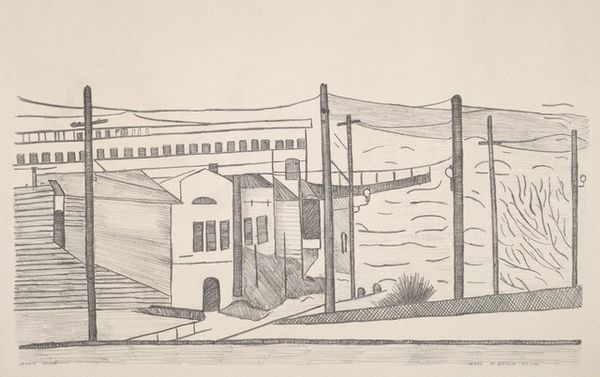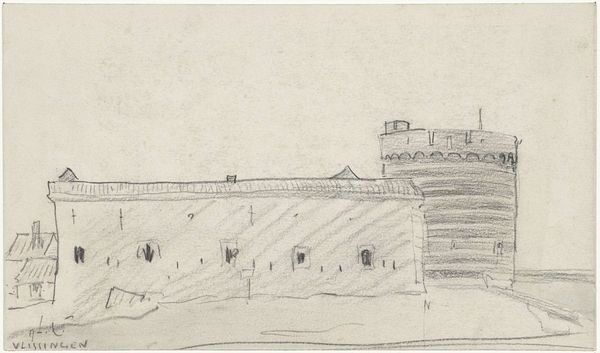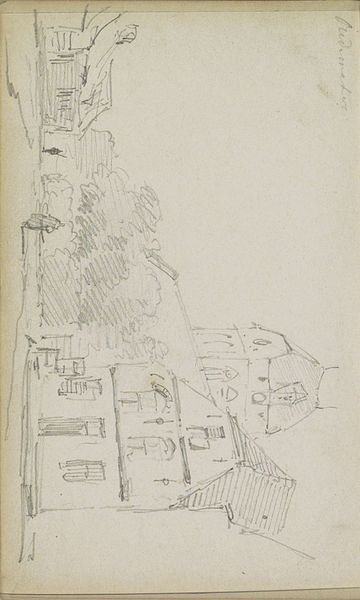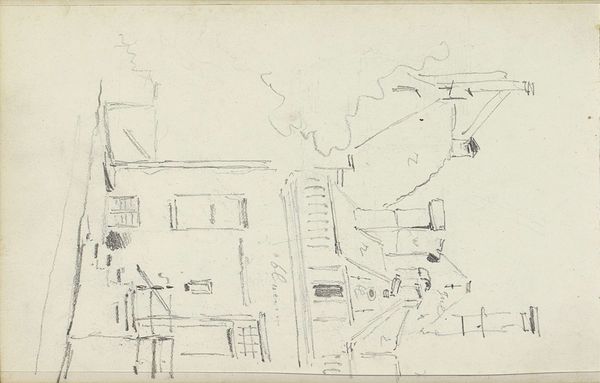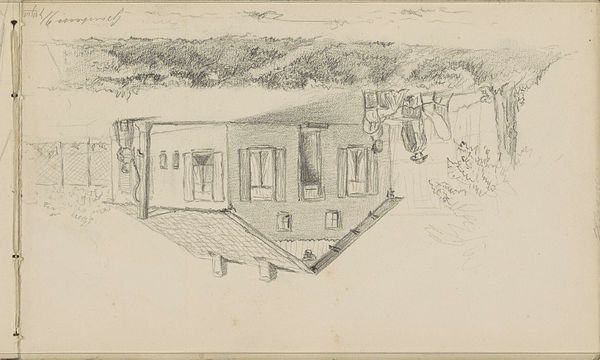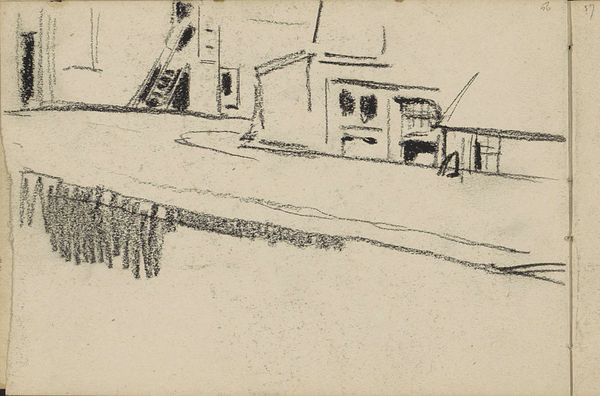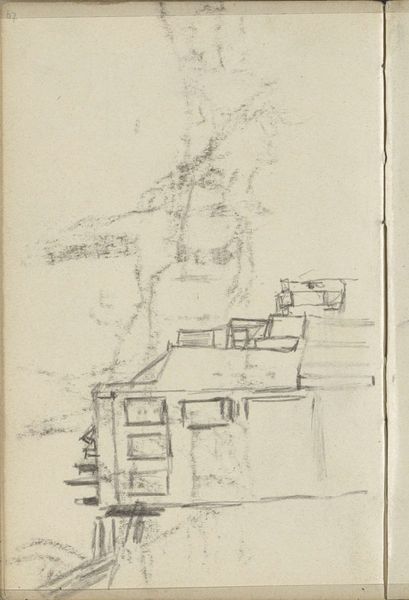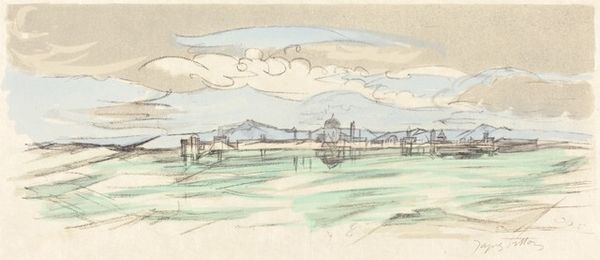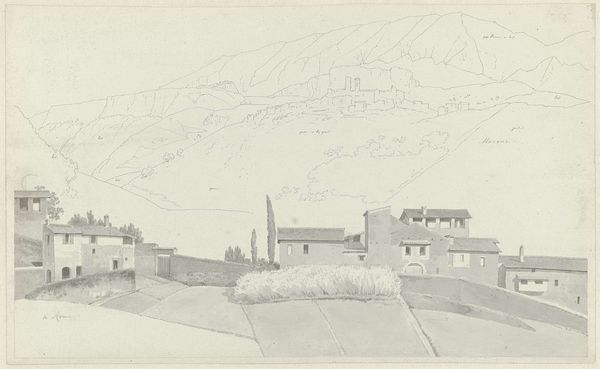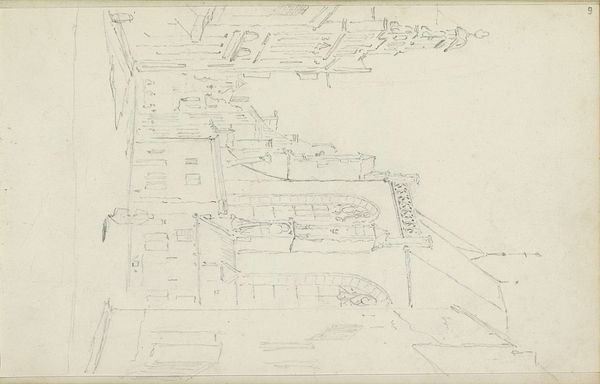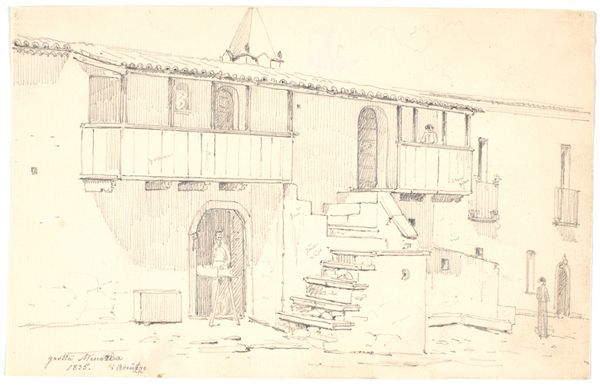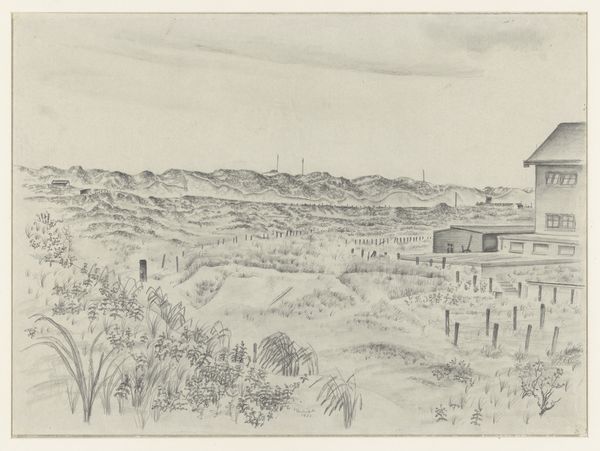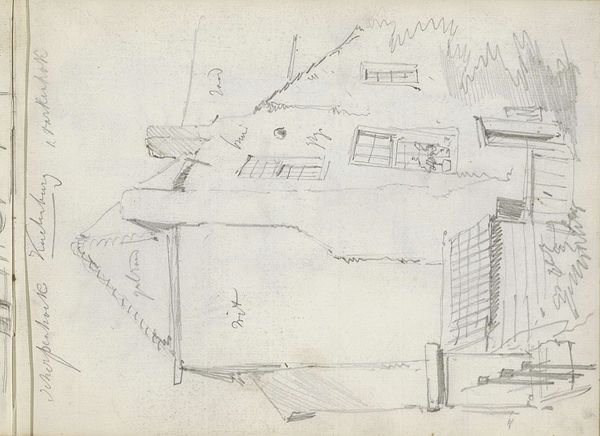
drawing, print, pencil
#
drawing
# print
#
landscape
#
pencil
#
cityscape
#
realism
Dimensions: image: 247 x 350 mm sheet: 298 x 407 mm
Copyright: National Gallery of Art: CC0 1.0
Curator: This is Jennie Lewis' "Houses Near S.S. Park S.F. Cal. No. 1," a pencil drawing and print created sometime between 1935 and 1943. Editor: My initial impression is one of quiet observation. It’s rendered so delicately, capturing the mundane architecture of what I presume is a San Francisco neighborhood. The textures, created with pencil strokes, feel almost tactile. Curator: The simplicity is striking, isn’t it? Lewis focuses on these ordinary houses, hinting at a sense of place during the pre-war era. You can almost feel the impact of urban planning on this cityscape. Editor: Exactly. And consider the materials: pencil, paper. Accessible, everyday. It speaks to a certain artistic economy, perhaps dictated by the Depression era, making art out of the immediate surroundings. Note how she uses cross-hatching to give depth to the shadowed areas. Curator: That’s an astute observation. This simplicity perhaps was an unconscious reaction to the grand artistic movements; choosing everyday life made art democratic, easily related to everyone. Editor: Or maybe a deliberate act? To focus on the materiality is to challenge that hierarchical idea of what is and isn't considered valuable art. Curator: Indeed. And look at how the electrical poles punctuate the skyline, framing the composition; elements necessary for an image to translate to print are all visible. Were there particular artistic circles shaping Lewis’ work in the Bay Area during that period? What institutions exhibited works like these, bringing the public to art in this period? Editor: Those stark lines against the softer rendering of the background hills, a great contrast there. It also subtly hints at labor too; the creation of these homes, someone put in sweat to erect these buildings. Curator: Yes! She definitely offers a look at that evolving American landscape in the early to mid-20th century through this artistic lens. Editor: By zeroing in on the construction itself—and using minimal means—she points to the value inherent in both the art-making process, and of labor and community construction during that time. Curator: After considering the work’s cultural milieu, it makes it possible for me to see the image not just as art, but as a window into a time of economic upheaval and slow progress. Editor: And examining the materiality directs our attention not just to "what" it is, but "how" it came to be and what it might suggest about who created this piece of work.
Comments
No comments
Be the first to comment and join the conversation on the ultimate creative platform.
